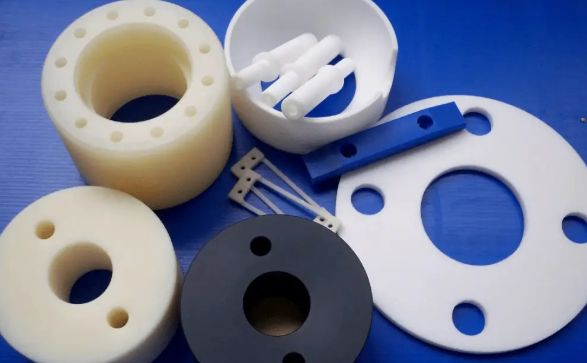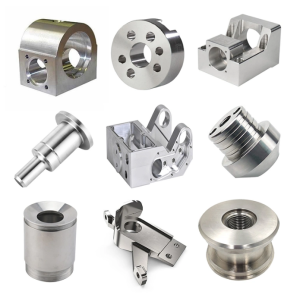Overview of Nylon 66
Nylon, or Polyamide (PA), is a thermoplastic resin with a repeating amide group in the molecular chain. It includes various types such as aliphatic polyamides, aliphatic-aromatic polyamides, and aromatic polyamides. As one of the five major engineering plastics, Nylon is widely used across industries, particularly in automotive components, machinery parts, electronics, adhesives, and packaging materials. Among these, the most commonly used types are Nylon 66 and Nylon 6, with Nylon 66 being produced from hexamethylenediamine and adipic acid through polymerization.

Advantages of Nylon 66:
- High strength
- Corrosion resistance
- Wear resistance
- Self-lubricating
- Flame retardant
- Non-toxic and environmentally friendly
Disadvantages of Nylon 66:
- Poor heat resistance and acid resistance
- Low impact resistance at low temperatures or in dry conditions
- High water absorption, affecting dimensional stability and electrical performance
High-Performance Fibers
High-performance fibers are chemical fibers that exhibit exceptional durability and load-bearing capabilities. These fibers often have special physical or chemical structures that provide properties not found in traditional fibers, such as high temperature resistance, corrosion resistance, and flame retardancy.

Carbon Fiber: Key Material in Composites
Carbon fiber is a high-performance material obtained by carbonizing organic fibers, with a carbon content of over 90%. Its microstructure resembles that of artificial graphite, where carbon atoms are arranged in a layered, disordered structure.
Advantages of Carbon Fiber:
- Lightweight
- High strength and modulus
- High-temperature resistance
- Wear resistance
- Corrosion resistance
- Fatigue resistance
- Conductivity (both electrical and thermal)
Disadvantages of Carbon Fiber:
- High cost
- Difficulty in impregnation
- Poor transparency
- Hard to inspect defects
Carbon fibers are typically classified based on their precursor materials:
- Polyacrylonitrile (PAN)-based carbon fiber
- Pitch-based carbon fiber
- Rayon-based carbon fiber
Carbon fiber composites are essential in industries like aerospace, transportation, and sports equipment due to their high tensile strength, low weight, and ability to withstand extreme temperatures.
High-Performance Composite Manufacturing Processes
Common methods for manufacturing high-performance composites include:
| Manufacturing Process | Description |
|---|---|
| Hand Lay-up Molding | Manual layering of fibers and resin. |
| Injection Molding | Molded under high pressure. |
| Bag Molding | Vacuum bag is used for composite shaping. |
| Compression Molding | Composite material is molded under heat and pressure. |
| Centrifugal Casting | Material is poured into a rotating mold. |
| Pultrusion | Continuous fibers are pulled through a resin bath and then shaped.连续的纤维被拉过树脂浴,然后成型。 |
Preparation of Carbon Fiber Reinforced Nylon 66 Composites碳纤维增强尼龙 66 复合材料的制备
The preparation process of carbon fiber reinforced Nylon 66 composites involves several key steps:碳纤维增强尼龙 66 复合材料的制备过程涉及几个关键步骤:
- Raw Materials: Nylon 66, carbon fiber, silane coupling agents, dispersing agents, and other additives.原料:尼龙66、碳纤维、硅烷偶联剂、分散剂和其他添加剂。
- Equipment: Twin-screw extruder, plastic injection molding machine, and electric hot-air drying oven.
Processing Steps:
- Temperature settings for the extruder:
- Zone 1: 250-252°C
- Zone 2: 265-267°C
- Zone 3: 270-272°C
- Zone 4: 270-273°C
- Zone 5: 275-280°C
- Screw speed: 200-400 rpm
- Carbon fiber is added in bundles (e.g., 1 bundle = 12,000 fibers) at specific feeding points. The resulting samples are labeled PA66/CF-1, PA66/CF-2, and PA66/CF-3 depending on the number of fiber bundles used.
Performance Testing of Carbon Fiber Reinforced Nylon 66 Composites
1. Effect of Carbon Fiber Content on Density
The density of PA66/CF composites increases slightly with the addition of carbon fiber, as carbon fiber has a higher density than Nylon 66. However, the composite density remains well below that of steel (7.85 g/cm³), offering lightweight benefits.
| Carbon Fiber Content | Density (g/cm³) |
|---|---|
| PA66 | 1.13 |
| PA66/CF-1 (1 bundle) | 1.14 |
| PA66/CF-2 (2 bundles) | 1.15 |
| PA66/CF-3 (4 bundles) | 1.17 |
This low density makes carbon fiber reinforced Nylon 66 composites ideal for weight-sensitive applications, contributing to energy savings and increased performance.
2. Effect of Carbon Fiber on Crystallization
The carbon fibers are uniformly distributed within the Nylon 66 matrix. The presence of carbon fiber disrupts the crystallization process of Nylon 66, as evidenced by the lack of spherulitic crystal patterns in the composite, compared to pure Nylon 66.
3. Effect on Morphology and Interface Bonding
In the PA66/CF composite, the Nylon 66 matrix forms a good bond with the carbon fibers, ensuring that the fibers are well embedded in the matrix. The fracture surface of the composite is rough, indicating that the carbon fibers are effectively pulled out during fracture, contributing to the material’s toughness.
| Material | Fracture Surface | Behavior |
|---|---|---|
| PA66 | Smooth | Brittle fracture |
| PA66/CF (with 4 bundles) | Rough | Tough fracture with fiber pull-out |
4. Effect of Carbon Fiber on Mechanical Properties
As the carbon fiber content increases, the mechanical properties of the PA66/CF composite significantly improve.
| Property | PA66 | PA66/CF (with 4 bundles) |
|---|---|---|
| Tensile Strength | 87.2 MPa | 200.2 MPa (2.3x improvement) |
| Tensile Elongation | 3.4% | 3.3% |
| Flexural Strength | 89.9 MPa | 280.2 MPa (3.1x improvement) |
| Flexural Modulus | 2932.1 MPa | 13560.8 MPa (4.6x improvement) |
Conclusion
- Lightweight: The density of PA66/CF composites is under 1.3 g/cm³, which is less than one-sixth of steel’s density, contributing to significant weight reduction.
- Good Bonding: The carbon fibers are well integrated with the Nylon 66 matrix, enhancing toughness and performance.
- Enhanced Mechanical Properties: Compared to pure Nylon 66, the addition of carbon fiber significantly improves tensile and flexural properties. For instance, the tensile strength of the PA66/CF composite with four bundles of carbon fiber is 2.3 times that of pure Nylon 66, and the flexural strength increases by over 3 times.
In conclusion, carbon fiber reinforced Nylon 66 composites offer outstanding mechanical performance and weight reduction, making them suitable for a wide range of industrial applications, including automotive, aerospace, and sporting goods.


